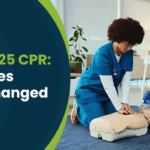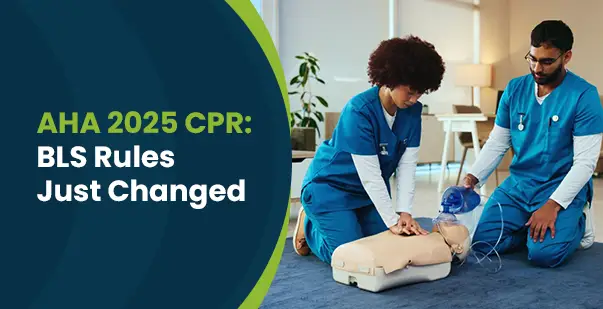Imagine lying down in a comfortable position that not only helps you relax but also plays a crucial role in various medical settings. This is what we call the recumbent position. Whether you’re undergoing a medical examination, recovering from surgery, or simply trying to get a good night’s sleep, the recumbent position is fundamental to achieving comfort and promoting healing.
When lying in the recumbent position, the body is usually fully supported by the surface beneath, whether it’s a bed, mat, or other flat surface. This position can vary slightly depending on the angle of the body. It is also useful in exercises and therapy, where lying down can help stabilize the body and focus on specific muscle groups or movements.
Additionally, learning about different positions in an online first aid training course can help individuals respond effectively in medical emergencies.
In this guide, we’ll go over everything you need to know about a recumbent position.
What Is the Recumbent Position?
The recumbent position is when a person lies down horizontally on their back, side, or stomach. To get into the recumbent position, a person lies down on a flat surface. When on the back, the head, neck, and spine should be aligned to prevent strain and ensure comfort.
The recumbent position is widely used in medical exams and procedures. For example, during a physical exam, a doctor may ask the patient to lie down to better access and assess different parts of the body. Patients recovering from surgery often use this position to aid their recovery and stay still.
Read More: First Aid for Bleeding: Types and How to Treat
Different Types of Recumbent Positions
The recumbent position is versatile, with several variations used in medical and everyday contexts. Each variation serves specific purposes and offers unique benefits. Here, we will explore five common variations: supine, prone, lateral recumbent, Fowler’s, and semi-Fowler’s positions.
Supine Position
The supine position involves lying horizontally on the back with the face and torso facing upward. The arms and legs can be positioned comfortably alongside the body or slightly spread apart. This position is commonly used in surgeries, medical examinations, and diagnostic procedures. It is the standard position for abdominal surgeries and is often used for procedures like MRIs and X-rays. It’s also frequently used in physical examinations to assess the abdomen, chest, and extremities.
The supine position provides a stable and accessible posture for both patients and healthcare providers. It allows for easy monitoring and access to vital organs. However, it can be uncomfortable for prolonged periods and may not be suitable for patients with respiratory issues or certain spinal conditions.
Dorsal Recumbent Position
The dorsal recumbent position is a specific type of lying position where an individual lies flat on their back with their legs extended and arms at their sides. This dorsal recumbent position is often used in medical settings and has several applications and benefits.
- Flat on the Back: The person lies completely on their back, with the body evenly aligned.
- Legs Extended: The legs are kept straight and close together, not bent or elevated.
- Arms at the Sides: The arms are positioned straight along the sides of the body.
Semi Recumbent Position
The semi recumbent position is a variation of the recumbent position where an individual lies back but with their upper body elevated. This position is often used in medical care and can offer several benefits depending on the situation.
- Partial Elevation: The person lies back with their upper body elevated at an angle, typically between 30 to 45 degrees.
- Legs Extended or Slightly Bent: The legs may be extended or slightly bent at the knees, depending on comfort and medical needs.
- Arms Positioned Comfortably: The arms can be placed comfortably at the sides or adjusted as needed.
Prone Position
The prone position involves lying face down on your stomach. When you lie in the prone position, your body weight is distributed along the front side of your body, with your chest and abdomen resting against the surface. This position is commonly used during certain surgeries or treatments. It allows healthcare professionals to access the back of the body.
Lateral Recumbent Position
The lateral recumbent position involves lying on your side, with one side of your body resting against a flat surface.
When lying in the lateral recumbent position, your body is supported on either the left or right side. This position is often preferred in situations where ease of access to one side of the body is needed, such as during medical examinations, sleep, or recovery.
Fowler’s Position
Fowler’s position is a seated or semi-seated posture where the upper body is raised at an angle, usually between 30 to 90 degrees. This position is often for patients who have trouble breathing or need to be in a more comfortable, upright position for certain treatments or procedures.
In Fowler’s position, the patient’s legs may be bent slightly or kept flat, depending on how high the upper body is raised. This position is useful for patients who have trouble breathing because sitting up makes it easier to breathe. It’s also often used after surgery or during recovery, helping prevent issues like choking or pressure sores.
Semi-Fowler’s Position
A semi-Fowler’s position is a slight variation of Fowler’s position, where the upper body is lifted at a gentler angle, usually between 30 and 45 degrees.
In this position, the patient’s head and torso are raised, while their legs can be bent slightly or kept flat on the bed. By lifting the upper body, the Semi-Fowler’s position eases pressure on the heart and lungs, making it easier to breathe compared to lying flat. It’s also helpful for those who need some elevation while resting to avoid problems like acid reflux or choking.
Build strong and certified skills
Get certified in Basic Life Support (BLS) with our flexible online course.
Real-time Applications of the Recumbent Position
The recumbent position, which involves lying down flat or at a slight incline, offers various benefits depending on the context in which it’s used. This position is commonly employed in healthcare, fitness, and daily life. Let’s look at some common applications:
Medical Examinations
The recumbent position allows doctors to examine the body thoroughly. Lying flat provides a stable and accessible posture, making it easier to assess the abdomen, chest, and extremities.
It helps in detecting abnormalities such as lumps, swellings, or tenderness that might be less noticeable when standing or sitting.
Specific Tests and Procedures:
The recumbent position is used in a variety of medical tests and procedures, including:
- Ultrasounds: Often performed with the patient in a supine position to get clear images of internal organs.
- Blood Pressure Measurement: Lying down can give a more accurate reading in certain cases, especially for patients with orthostatic hypotension.
- Electrocardiograms (ECGs): Performed with the patient lying flat to monitor heart activity without interference from muscle movements.
Surgical Procedures
The recumbent position offers stability and easy access to various parts of the body, which is crucial for precision during surgeries. It also helps maintain patient safety and comfort throughout the procedure.
- Abdominal Surgeries: Such as appendectomies or hernia repairs, which require access to the abdominal cavity.
- Cardiac Surgeries: Patients often lie in a supine position to allow surgeons clear access to the heart and chest.
- Orthopedic Surgeries: Including hip and knee replacements, where access to the joints is essential.
Therapeutic and Recovery Purposes
The recumbent position is used in exercises and therapies to reduce strain on the spine and joints, facilitating safe and effective rehabilitation. It allows patients to perform gentle movements and stretches without bearing their full body weight.
- Promotes better blood circulation, aiding in the delivery of oxygen and nutrients to injured tissues.
- Reduces pressure on the back and joints, helping to alleviate pain and promote comfort during recovery.
Everyday Applications
The recumbent position is the most common sleep posture. It provides support and alignment for the spine and allows muscles to relax fully, helping to achieve deeper, more restful sleep.
- Lying down can help alleviate back pain by reducing pressure on the spine and supporting proper alignment.
- It enhances circulation by allowing blood to flow more freely, reducing the risk of swelling and varicose veins.
Read More: What are the Three C’s and the Three P’s of First Aid?
Benefits of the Recumbent Position
The recumbent position has several advantages, especially when it comes to providing care or managing specific conditions. Some of the many benefits include:
- Improves Comfort: Lying down can help reduce discomfort, especially for people with back pain or other physical issues.
- Enhances Breathing: This position can make breathing easier for some individuals by reducing pressure on the chest and lungs.
- Facilitates Circulation: When lying flat, blood flow can improve, which may help with circulation and reduce the risk of blood clots.
- Eases Pressure: It helps distribute body weight more evenly, reducing pressure on specific body parts, which can prevent pressure sores.
- Supports Relaxation: The recumbent position can promote relaxation and reduce stress, helping the body to recover more effectively.
- Reduces Risk of Falls: Lying down minimizes the risk of falling or injury from sudden movements, which is important for weak or unsteady individuals.
- Improves Sleep Quality: Lying down in a comfortable position can improve the quality of sleep for those having trouble sleeping due to discomfort or pain.
- Aids in Recovery: This position can assist in healing for patients recovering from surgery or injury by providing the body with a stable and supportive environment.
- Facilitates Medical Procedures: Many medical procedures and assessments are performed more effectively with the patient in a recumbent position.
Considerations and Precautions
While the recumbent position offers many benefits, it’s important to be aware of situations where it may not be suitable. There are potential risks and complications associated with this position, and certain precautions can help ensure safety and comfort.
- Medical Conditions: Lying flat may not be advisable for individuals with certain medical conditions, such as severe respiratory issues or heart problems. It’s important to consult with a healthcare professional before using this position.
- Risk of Aspiration: People who are at risk of choking or aspirating (inhaling) food or liquids should avoid lying flat. In these cases, a more upright position may be safer.
- Pressure Sores: Although the recumbent position can reduce pressure on some areas, prolonged lying down can still lead to pressure sores. It’s important to reposition the person regularly to avoid these sores.
- Circulation Issues: For individuals with poor circulation, lying flat might worsen their condition. Adjusting the position or using special cushions can help manage these issues.
- Breathing Difficulties: If someone has difficulty breathing while lying flat, consider elevating the head and upper body to improve airflow.
- Comfort and Support: Ensure that the person is comfortable by using appropriate bedding and cushions. A supportive mattress can help reduce discomfort and prevent pressure sores.
- Monitoring: Regularly check the individual’s comfort and health while they are in the recumbent position. Be attentive to any signs of discomfort or health issues.
- Ease of Movement: Make sure the person can move or adjust their position easily if needed. This can help prevent stiffness and discomfort.
Wrapping Up
The recumbent position is a fundamental posture with wide-ranging applications in healthcare, therapy, and personal comfort. By lying down in various forms, such as flat or at an incline, individuals can benefit from enhanced support and relief for different physical conditions. Whether used for medical examinations, recovery, or everyday relaxation, the recumbent position plays a crucial role in improving comfort and aiding in effective treatment. Enrolling in a BLS course gives you crucial skills to help in emergencies and can boost your job prospects in healthcare fields. It’s a valuable way to be prepared and make a difference when it matters most.
Training You Can Trust for Real Emergencies
Enroll in BLS Training
FAQ
1. What Position Decreases Heart Rate?
The recumbent position, particularly the supine position (lying flat on your back), can help decrease heart rate by promoting relaxation and reducing strain on the cardiovascular system.
2. Which recumbent position is best for patients with breathing difficulties?
Fowler’s and Semi-Fowler’s positions are ideal for individuals with respiratory issues, as they elevate the upper body to improve airflow and reduce pressure on the lungs.
3. How does the recumbent position benefit physical therapy and exercise?
It helps stabilize the body, allowing for controlled movements that target specific muscle groups without excessive strain, making it useful for rehabilitation and strength training.









